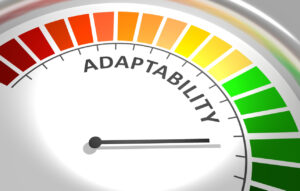Pitching 2025 predictions? Read this first.
It’s time to think about tomorrow.

Grace Williams is VP of client relations at PANBlast.
For most, the pumpkin spice latte is synonymous with fall, but for those of us in public relations, the latte’s return marks the start of a different season — predictions season. Each year, brands and publications alike publish perspectives on what’s to come in the year (or years) ahead. From macro topics like healthcare to niche subjects like forensic accounting, there’s no shortage of opportunities to contribute.
I could see how predictions might feel tired or overdone, but it’s a great time to reset for the year ahead, have meaningful and interesting conversations with your subject matter experts and get on the radar of a few of your favorite journalists (because you can bet the topic is on their ed cals).
Planning your predictions campaign
There’s a variety of places your well-earned predictions quotes could live. You should use them as the thesis for customer newsletters, blog content, LinkedIn content and short-form videos. Consider campaign elements like webinars, ebooks featuring outside SMEs and customer/market surveys about the future of the industry. Pitching predictions to media is only one part of a larger initiative.
I generally advise clients to start planning annual predictions campaigns in September. Years of data shows related pieces publish as early as October and run as late as April. Factor in the time it will take to get approved predictions from your SMEs and you better get going!
So you’re drafting predictions… but whose?
Once you have buy-in on the idea of a predictions campaign, the next step is to choose the thought leaders you’ll tap and schedule sessions to discuss their insights for the year ahead. Choosing thought leaders can come down to a few things:
- Willingness — Some thought leaders are more excited by the idea of predictions than others. That’s totally fine. We need bold predictions to garner coverage, so there’s no need to spend time convincing the CFO she has to publish a prediction if she isn’t interested.
- Title — Consider what types of predictions you might like to make and who maps to that topic. What makes the SME unique or a good fit for a specific trend? If climate change is a hot topic in your space and you have a director of sustainability, they’re likely a great person to use (and it doesn’t need to be your CEO).
- Availability — Predictions can be a heavy lift. Story-mining calls, quote approvals, blog and/or byline approvals and interview availability. If your SME has a big initiative they’re working on to close out the year, they might not be the best pick.
- Diversity — You’ve already considered the diversity of the SME bench you’re pitching, and the same principles apply to predictions. Readers don’t only want to know what white men have to say about 2025.
Important note: Resist the urge to include everyone! You really only need predictions from two or three people. Anything more and you’ll likely get overwhelmed with approvals and organization. Keep the initiative simple and focused.
Writing predictions that are *actually* good
The number one killer of predictions initiative is a bland, repetitive quote that doesn’t say much. Unfortunately, odds are your SMEs aren’t going to come to the call having just visited their favorite psychic. That’s totally okay, and it’s where you come in.
The majority of a PR person’s work on a predictions campaign happens in the prep stage, coaxing interesting insights out of SMEs and putting together predictions that don’t suck. Here’s how to do it:
- Provide thought starters — It’s way easier to react to someone else’s statement than it is to come up with your own. Structure your predictions calls in this format, bringing in research for your SMEs to weigh in on. Some places I like to pull from include industry predictions from the previous year (check in on them and see if they actually came to fruition), analyst reports, competitor thought leadership and conversations from sales calls and/or your customer advisory board.
- Consider major events — ICYMI, there’s a pretty big election coming up! Consider the outcomes of that along with other macro trends that might be relevant to your industry (like holiday shopping for retail companies).
- Use AI to tell you what’s tired — The average 8th grader can type “What are some predictions for the HR tech space in 2025” into ChatGPT. So be better than that. If you want to use AI to get started, that’s fine, but if your SMEs are predicting the same as Claude or Gemini, don’t be shocked when you don’t see much success.
Be firm and confident in your follow-up questions during these sessions. You are the expert on media, and you know what will resonate and what won’t. Don’t be satisfied with the expected “AI is going to be big in 2025” response, and counsel your SMEs on the importance of vendor neutrality. No one is “checking” to make sure these predictions come true, so bolder is better. Your pushback now will result in more wins down the road.
Most of all, make sure what you’re getting is actually a prediction. I can’t tell you how many quotes I read that are statements of fact, or the general discussion of a trend. Predictions should predict something specific.
You’ve got the predictions, now what?
Before you post any predictions all to an owned channel, reserve a few specifically for media. The importance of exclusivity here cannot be overstated. If media coverage is a goal of your predictions campaign, do not first publish the same predictions verbatim on your site.
Coverage can take a variety of forms. Some reporters publish an annual roundup of quotes from go-to sources, others will use predictions as a timely topic for a Q&A or integrate the theme into ongoing coverage. Certain trades publish an entire series, with multiple articles segmented by trend. Predictions can also take the form of contributed content, where your SMEs write an entire piece either expanding on their own predictions or collaborating with others in the space on a joint piece.
A few things to keep in mind as you’re shopping prediction quotes:
- Do your research — It’s fairly easy to look back at coverage from this time last year and see if a reporter typically writes a predictions piece. Get a feel for their style, how they put their pieces together and offer them something they’ll respond well to. On the flip side, if they typically write in-depth features and haven’t ever run a roundup of quotes, an offer to send over a prediction is unlikely to land.
- Review past wins — Look back at where your predictions (or your competitors’ predictions) were covered last year and soft-sound those reporters to see if they’re working on an updated piece before going broad with your offer. It’s fun to offer a retrospective on your insights from last year and follow up with refreshed perspective for the next.
- Respect the process — I have to imagine that during predictions season the emails in journalists’ inboxes increase significantly. Due to this fact, many have developed very specific guidelines for submitting quotes. Sometimes they ask for submissions via a Google Form, others will proactively send an email to the PR people they regularly work with outlining specific guidelines (subject line, what to include, topics, etc.). This might differ from how you normally pitch, but it’s imperative to follow their guidelines. Failing to do so will lead to frustration from both sides.
- Streamline outreach — If you work at an agency, develop some sort of system for not inundating reporters. Collaborate in a spreadsheet, or assign point people to pubs you know will run a piece. One email detailing everyone at the agency’s predictions for the supply chain in 2025 is better than 8 disparate emails.
- Original quotes — Don’t give the same quote to two different reporters. Similar topics or themes are probably okay, but the exact same quote is a no-no.
I have always enjoyed predictions season. The opportunity to get fresh insights from our clients, inject some excitement into our campaigns and generate coverage a bit outside of the norm. It’s something we can rally around as an agency and alongside our clients, and it’s a great reminder that we work with some incredibly intelligent people who are energized by the changes we face, not intimidated by them.
Approach your predictions campaigns with genuine curiosity and enthusiasm for what the future could bring — I’m sure you won’t be disappointed.






